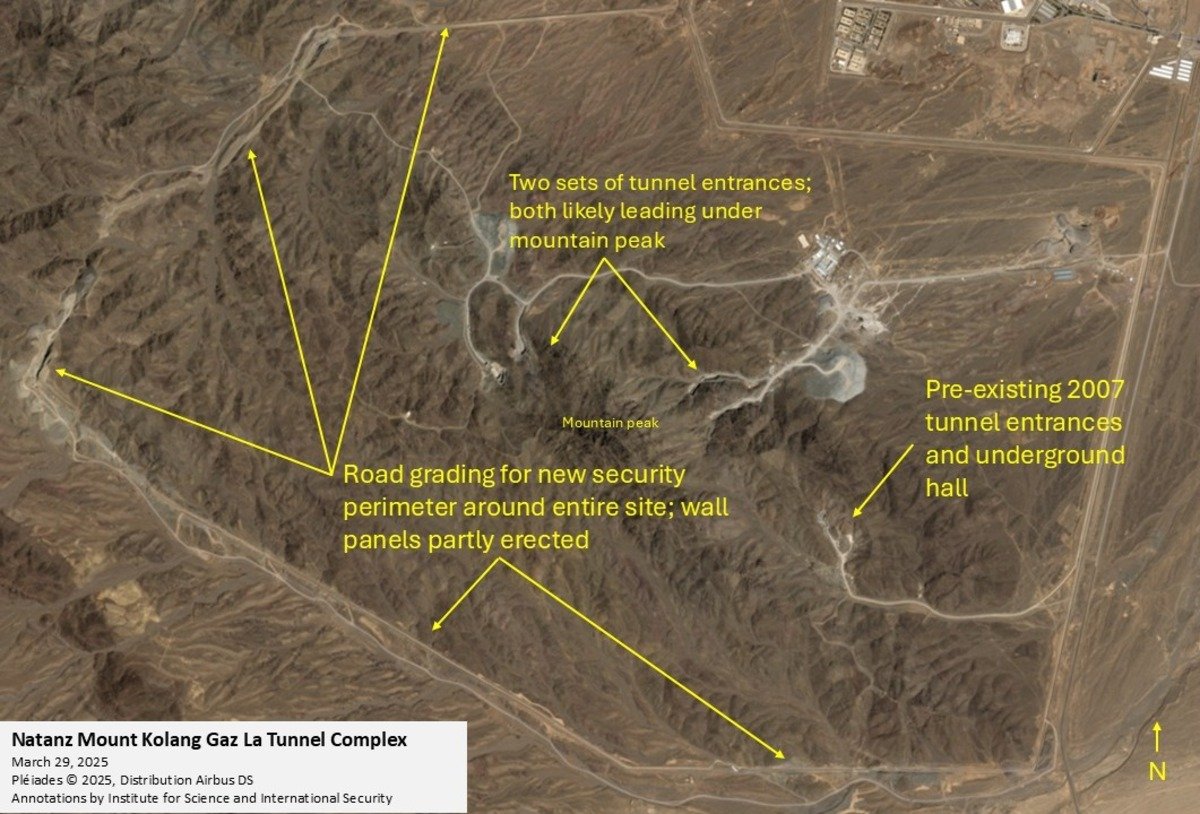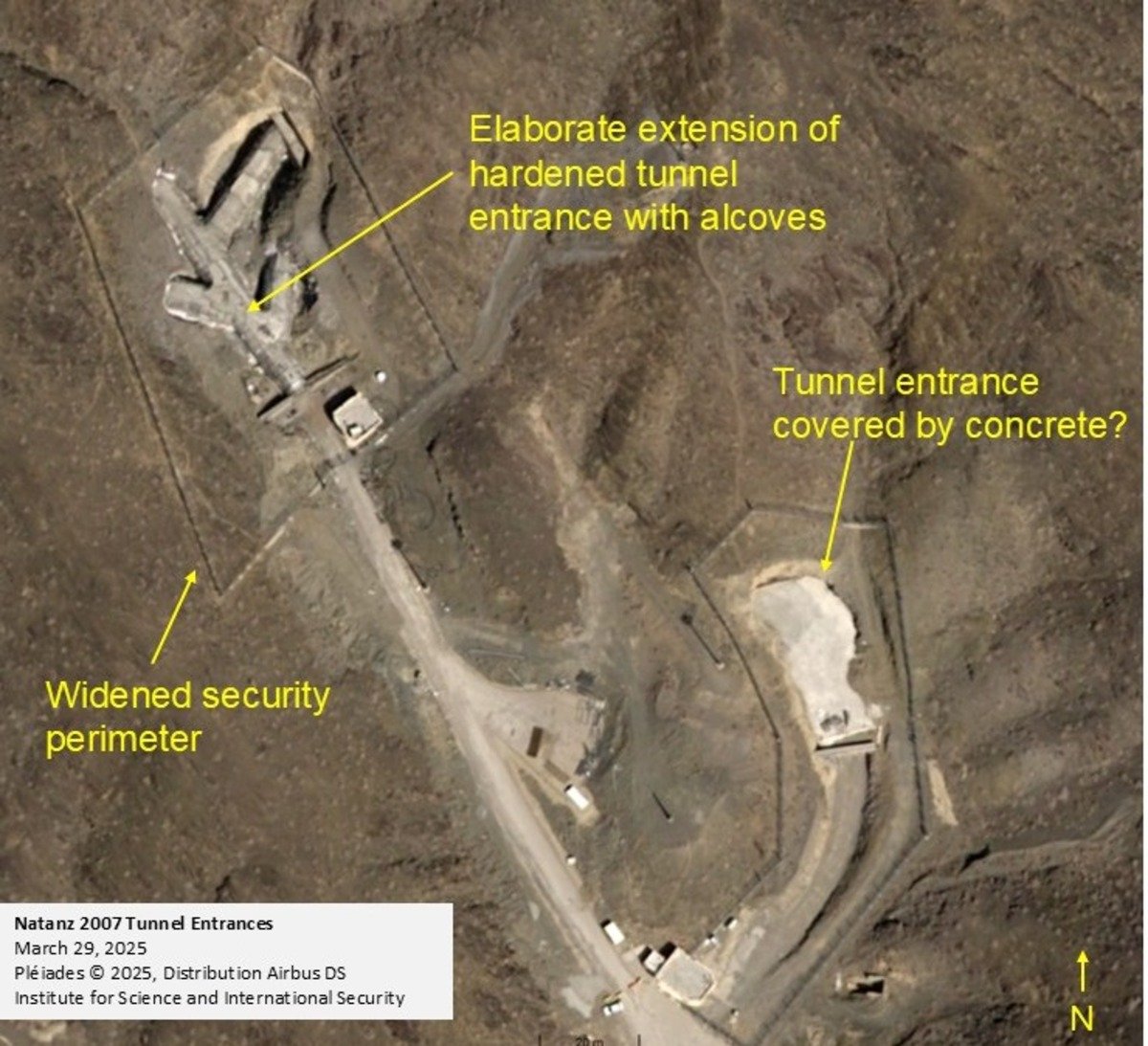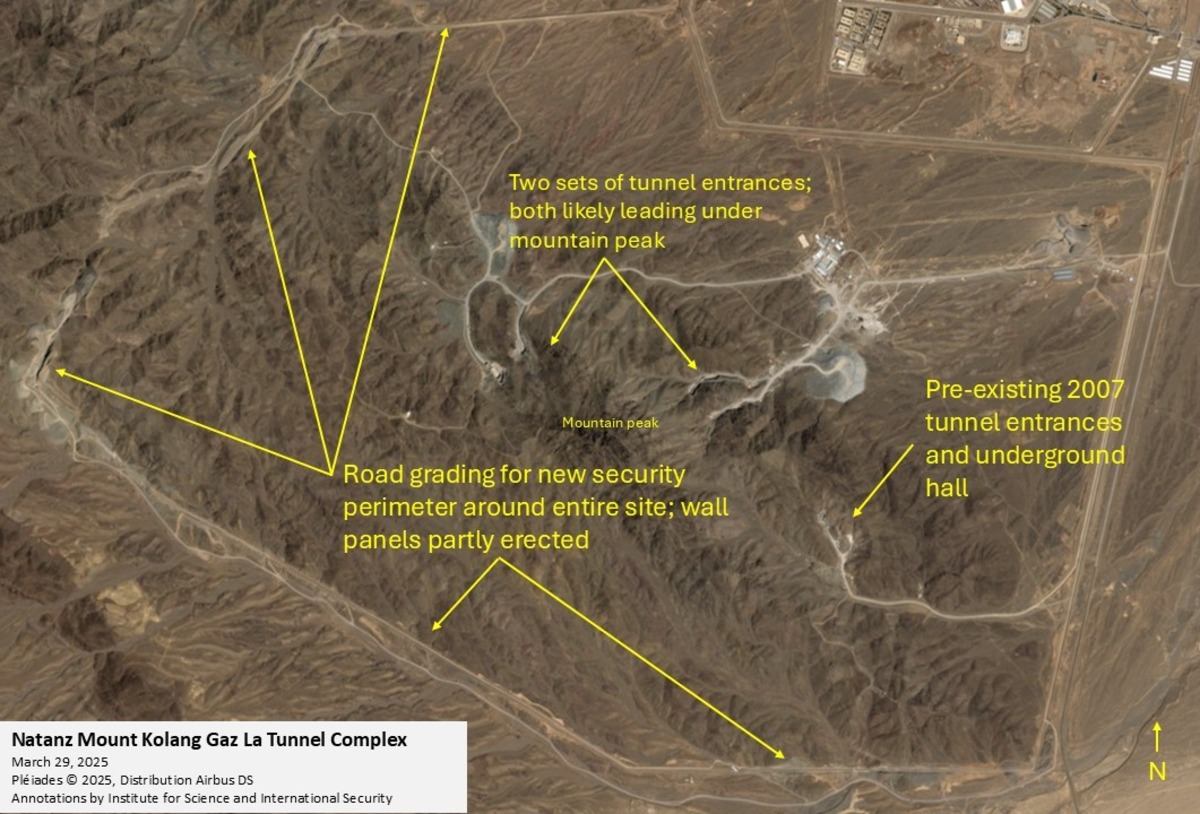In its mission to take out Tehran’s nuclear program, two of Iran’s major sites are likely out of reach of Israeli weapons.
Israel launched what it termed a “preemptive” campaign against Iran’s nuclear facilities and scientists, as well as the country’s ballistic missile sites and other military assets, on Friday.
Iran responded with drone and ballistic missile barrages. Strikes launched by both countries continued into Thursday.
Fordow, a major facility roughly 100 miles from the capital, Tehran, is built deep under a mountain. It is widely acknowledged the only real option to take out the site are 30,000-pound bunker-busting American bombs launched from U.S. B-2 Spirit bombers.
However, there is another hub, known as Mt. Kolang Gaz La, which sits on the outskirts of the Natanz nuclear site, considered Tehran’s main facility for enriching uranium southeast of the capital.
The Institute for Science and International Security (ISIS) published satellite imagery back in April that it said showed Iran was building a new security perimeter around the base of Mt. Kolang Gaz La.

Satellite imagery and annotations published by the Institute for Science and International Security in April 2025.
Satellite imagery and annotations published by the Institute for Science and International Security in April 2025.
Institute for Science and International Security
The United Nations‘ nuclear watchdog, the International Atomic Energy Agency (IAEA) has not visited the site of two nuclear tunnels at Mt. Kolang Gaz La, the organization has said.
“The new complex features halls more deeply buried than the Fordow uranium enrichment site,” ISIS said in its April assessment.
Israel cannot collapse the Fordow, nor Mt. Kolang Gaz La sites, William Alberque told Newsweek.
Alberque is a visiting fellow at the Henry L. Stimson Center think tank and a former director of NATO‘s Arms Control, Disarmament and WMD [Weapons of Mass Destruction] Nonproliferation Center.
Iran said in 2020 it had started construction on a new hall in “the heart of the mountain near Natanz,” in the center of the country, to make advanced centrifuges.
Israel and the U.S. have both insisted it is unacceptable for Iran to gain a nuclear weapon. While Tehran has said its nuclear program is for peaceful purposes, officials have publicly discussed the possibility of weapons.
U.S. President Donald Trump has kept the world on tenterhooks by refusing to confirm whether American aircraft and munitions would launch offensive action on Iranian sites. The Republican president insists Iran wants to “make a deal,” but has privately approved attack plans, according to reports on Thursday, although no final decision has been rubber-stamped.
The Israeli military said on Thursday it had struck an “inactive” nuclear reactor in Arak, east of Fordow, and a “nuclear weapons development site near Natanz.”
“This nuclear reactor in Arak was created for one purpose: to build a nuclear bomb,” the Israel Defense Forces (IDF) said. Iranian state media confirmed an Israeli strike on the reactor and reported an attack on the Khondab heavy water facility.

Satellite imagery and annotations published by the Institute for Science and International Security in April 2025, showing the Natanz nuclear enrichment site and construction to the south of the main complex.
Satellite imagery and annotations published by the Institute for Science and International Security in April 2025, showing the Natanz nuclear enrichment site and construction to the south of the main complex.
Institute for Science and International Security
The IAEA said it had information indicating the half-built Khondab heavy water research reactor was hit, but said it was not operational and had no radiological impact.
“With Iran, the facilities that we are most concerned about are the operating power plants, with Bushehr at the top of the list,” Nickolas Roth, from the Nuclear Threat Initiative, told the Washington Post.
Israel targeted Natanz in its initial strikes last week. Satellite imagery captured by Maxar, a space technology firm, on Saturday showed multiple damaged buildings at the site, while the IAEA said on Friday the aboveground part of the facility had been “destroyed,” along with power infrastructure there.
The watchdog then assessed on Monday that Israel had “severely damaged if not destroyed” centrifuges at the underground facility in Natanz.
The belowground centrifuges were not hit directly, but strikes caused power cuts and “completely destroyed” the aboveground Natanz site, Rafael Grossi, chief of the IAEA, told the BBC.
Mohammad Eslami, the head of Iran’s Atomic Energy Organization, described the country’s facilities on Wednesday as in “good” condition, according to the semiofficial Tasnim news agency.
The agency told the U.N. Security Council at the time that Iranian authorities had reported attacks on Isfahan and to Fordow, but could not provide further details.
But satellite imagery has indicated no visible damage to Fordow, a site publicly revealed in 2009.
Israel struck nuclear-linked sites in Isfahan, south of Fordow, and damaged four buildings at the facility, Grossi said on Sunday.
Trump has warned Iran—which has cast the U.S. as already involved—that it would face “the full strength and might” of the U.S. military on “levels you’ve never seen before” if Iran attacked the U.S. in any way.
The country’s supreme leader, Ayatollah Ali Khamenei, threatened the U.S. on Wednesday with “irreparable damage” if Washington became militarily involved.
“I may do it, I may not,” Trump told reporters at the White House on Wednesday, when asked if he would launch attacks.
